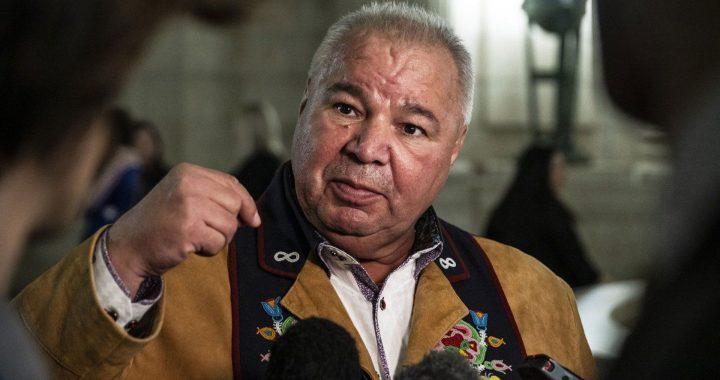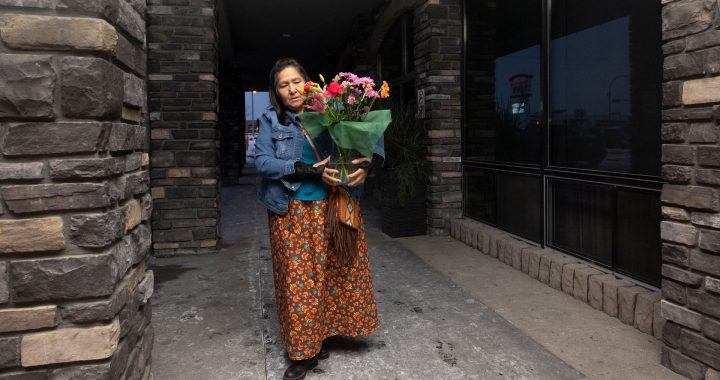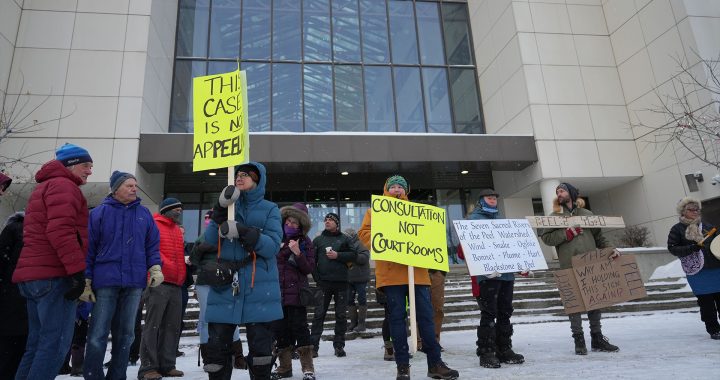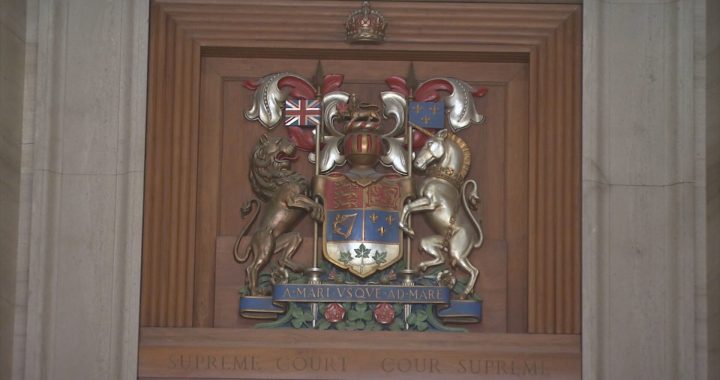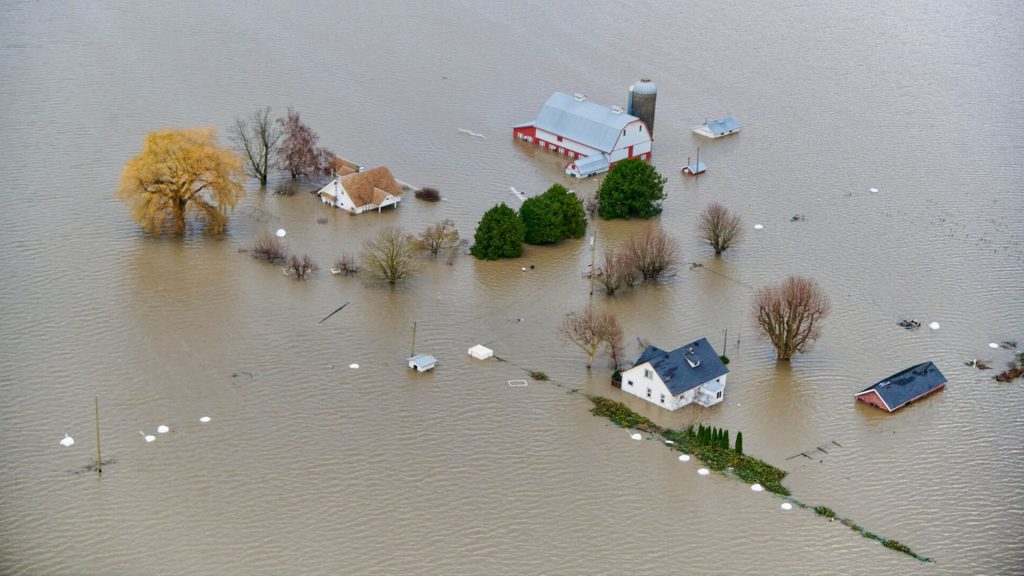
The Sumas valley in late November 2021 after flooding temporarily turned it back into Sumas Lake. Photo: The City of Abbotsford
A First Nation in B.C. likes the idea of restoring Sumas Lake in the southern part of B.C. back to its natural state.
The proposal comes from the University of British Columbia in a report from its Martin Conservation Decisions Lab and the Department of Forest and Conservation Sciences.
The lake, on the traditional territory of the Sumas Sema:th Nation, was drained by settlers in the 1920s for pastureland. It used to flow into the Fraser River in B.C. and the Nooksack River in Washington state.
It’s food- and life-giving source is part of the origin story of the Sema:th people, a band government of the Sto:lo people located in the Upper Fraser Valley in Abbotsford.
“We are looking into the rights of nature and starting to educate people about the Sumas Lake that existed,” said Cree lawyer Leah Ballantyne, a UBC grad and consultant to the Lower Fraser Fisheries Alliance.
“… And do research over whether the colonial tool of providing legal personhood would benefit, what are those benefits, and, if not, what are the consequences or the pros and cons of that.”
Severe flooding
When the area was hit by severe flooding in 2021, the lake filled up again and sparked debate about what happened in the past and what should happen in the future.
For the band, it became an opportunity to follow the lead of Indigenous Peoples in other countries who have successfully bestowed legal rights on nature to help stave off unwanted development.
Emptying the lake seemed like a good idea at the time, boasted the Chilliwack Progress in Nov. 6, 1912.
“The reclamation of these Dominion and private lands would be a great boon to the Fraser Valley and the whole province,” the newspaper said. “Draining the lake would make these ‘now useless’ lands ‘fertile and productive.’”
But it wasn’t right, says Sumas Chief Dalton Silver.
“For the Semá:th people, the lake represented life and livelihood,” he told UBC. “In 1924, the lake was drained in an instance of land theft, decimating an ecology that supported a rich and diverse Indigenous food system and replacing it with a settler food system.”

Ballantyne says the work is potentially ground-breaking in Canada.
“We are at the very beginning stages of our work and the legal personhood is another legal tool in the colonial toolbox,” she said in a telephone interview with APTN News.
“We’d basically be using provincial and potentially municipal laws to do that along with First Nation Indigenous knowledge and laws to support the work, or be at the forefront of that kind of work,” Ballantyne added.
“It’s a different angle, but the goal is to ensure the viability and vitality of the water and all the sentient beings have a right to live and have their life cycle in a clean environment.”
The approach has worked elsewhere.
In 2008, Ecuador wrote the laws of nature into its constitution, while Bolivia passed The Mother Earth Law and Integral Development to Live Well Law on Oct. 15, 2012, and, in 2014 New Zealand accorded legal personhood rights to rivers and forests.
Panama, meanwhile, published a new law on Feb. 24, 2022 to recognise the right of nature to “exist, persist and regenerate”.
Was drained
Sumas Lake was drained and the Vedder Canal built in the early 1920s, using a pump station to divert the lake’s in-flowing rivers for irrigation and to allow European farmers to access the fertile soil. It was described as an engineering marvel at the time.
The lake that used to host Indigenous food systems is now home to an agrarian food system – a system of settler farming. According to Heritage Abbotsford, there were ample stocks of salmon, steelhead, sturgeon and freshwater mussels. Deer, elk and waterfowl were also abundant.
Since the flood of 2021, among the solutions that have been proposed include dredging up silt, building a dike along the U.S. border to stop the Nooksack on its passage north, and letting Sumas return to at least part of its former scope.
“No amount of diking will stop that and we witnessed that in November 2021,” said Ballantyne. “The Se:math Band and other First Nations in the lower Fraser are attempting to have their decision-making respected and their voices at the table for future flood management plans.”
The UBC report says this “ecological reconciliation” is a way to turn Sumas Prairie back into Sumas Lake.
Buying out properties
“This can be done by buying out properties on the lakebed – a solution that is projected to cost around $1 billion, less than half of the estimated $2.4 billion cost of repairing the dykes and installing a new pump station,” says study author Riley Finn, a researcher at the Martin Conservation Decisions Lab at UBC in a paper in Frontiers of Conservation Science.
“Dyke rehabilitation programs tend to assume that future waterflows will be predictable, however climate projections show that flooding events are likely to increase in the future – and the water needs somewhere to go,” Finn added in his paper.
“By restoring Sumas Lake – Semá:th Xhotsa – we can help the region adapt to future floods, facilitating climate resiliency in the long term. It is the most ecologically responsible solution for flood management in the region.”
The flooding, caused by a series of “atmospheric rivers” that rained down on B.C. between November and December of 2021 caused the evacuation of more than 3,000 people in B.C. and 500 in Washington.
It caused nearly a billion dollars in damage.
Silver, who was unavailable for comment, only had to look out his window in the fall of 2021 to see water-soaked Sumas Prairie.
“That used to be Sumas Lake 100 years ago,” he told APTN at the time. “They never should have drained that lake in the first place.
“We say through our teachings that that’s always something that will come back and haunt you.”
Editors Note: This article was corrected on July 29, 2024, to indicate that the report came from the UBC Martin Conservation Decisions Lab, not the environmental law department.





